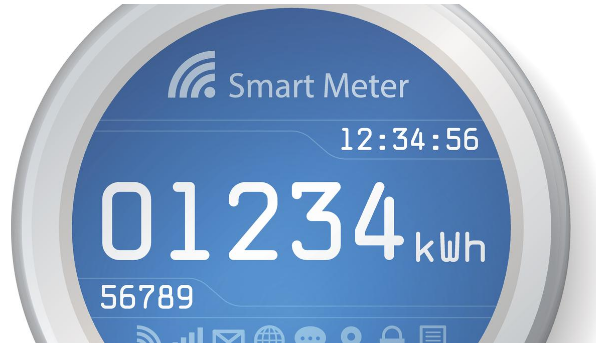Context:
- More than 5.5 million smart metres have been installed in India, and over 100 million sanctioned.
- The target is to replace 250 million conventional electric metres with prepaid smart metres by 2025-26.
 Image Credits: The Hindu
Image Credits: The Hindu
| Probable Question:
Q. Smart metres can play a crucial role in meeting its growing electricity demand while decarbonising its generation sources. In this light, discuss the overhaul needed in the Smart Meter National Programme. |
About Smart Meter National Programme (SMNP):
- Aim: To replace 25 crore conventional metres with smart metres in India.
- Smart metres are connected through a web-based monitoring system which will help to reduce commercial losses of utilities, enhance revenues and serve as an important tool in power sector reforms.
- Nodal Agency: Energy Efficiency Services Limited, Ministry of Power.
- Implementation: It is being implemented under the BOOT model on cost plus approach, which means all Capex/Opex is done by EESL and the states/ utilities are not required to invest upfront
What is a smart Metre?
- A smart metre is an electronic device that records information such as consumption of electric energy, voltage levels, current, and power factor.
- Smart metres communicate the information to the consumer for greater clarity of consumption behaviour, and electricity suppliers for system monitoring and customer billing.
- Benefits: Smart metres help discoms:
- reduce AT&C losses,
- improve their financial health,
- incentivise energy conservation,
- enhance ease of bill payments and
- ensure billing accuracy by getting rid of manual errors in metre reading.
- enhances consumer satisfaction through better complaint management
- enable Consumers to get the ability to track their usage and pay their bills easily through mobile phones.
Roadblocks in implementation
- Improper access and usage: Half the users were not using the smart meter mobile app, and many were unable to access detailed electricity bills, leaving them doubtful about their bill computation and deductions.
- Data privacy: Smart meter data can reveal sensitive information that can be analyzed from electricity usage patterns.
- Network costs: The government has not yet clarified on the network costs, who will bear it, and the impact it will have on the electricity bills of the poor.
Way Forward:
- Awareness & accessibility:
- The Ministry of Power should drive a nationwide campaign to educate consumers about smart metre benefits and improve the uptake of smart metre apps.
- The apps should be accessible to users from diverse socioeconomic backgrounds and provide actionable tips and information.
- Role of DISCOMs:
- Discoms must closely work with Advanced Metering Infrastructure Service Providers (AMISPs) to ensure a smooth installation and recharge experience for users, to leverage smart meter data for revenue protection and consumer engagement.
- Discoms will need to strengthen their internal capacity through suitable staffing and training interventions.
- Collaboration and innovation:
- Discoms, system integrators and technology providers should collaborate to devise innovative and scalable data solutions.
- This would require an ecosystem that fosters innovation in analytics, data hosting and sharing platforms, and enables key actors to collaboratively test and scale new solutions.
- Regulatory Changes:
- Policymakers and regulators must strengthen regulations to empower consumers to unlock new retail markets.
- Provisions concerning phaseout of paper bills, arrear adjustment, frequency of recharge alerts, buffer time, rebates, and data privacy should be incorporated within existing State frameworks.
- Regulators must also enable simplification and innovation in tariff design and open the retail market to new business models and prosumagers (producers, consumers, and storage users).
News Source: The Hindu
![]() 6 May 2023
6 May 2023
 Image Credits: The Hindu
Image Credits: The Hindu